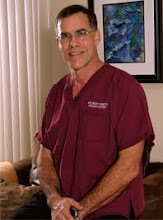 |
| Today, Dr. Yoho brings you a two-for-one blog post |
We emphasize the big three. Number one, support. Number two, fish oil. And number three, Vitamin E.
The support will help maintain the shape of the breast. The breast is sort of like Silly Putty, and it will gradually sag if not supported aggressively with the weight of the implant. Sometimes young people can get away with breasts that don’t sag so much for a while, but in the long run gravity catches up.
The other two things we emphasize after breast surgery involve prevention of capsular contracture. Capsular contracture or firming of the breast implant is the most common problem after breast surgery. We really think that Vitamin E is very helpful and have seen patients who weren’t taking their Vitamin E soften their breasts after starting just the Vitamin E. We recommend 800 IU a day in tablet form. This along with the fish oil can be purchased at vitacost.com.
Fish oil is now regarded as an excellent anti-inflammatory. Dr. Yoho takes it in large quantities himself for foot arthritis. We recommend a teaspoon of the fish oil a day and recommend the purified fish oil such as Nordic Naturals, Carlson’s brand or Eskimo brand fish oils. If you must take the capsules, you can take at least four a day, and if you actually have the start of firming of the breasts, Dr. Yoho may recommend a larger dose for a few months.
Breast wishes,
_______________________________
Robert Yoho, M.D.
The Advantage of Coming to See Dr. Yoho for Non-Invasive Procedures If You Are Prone to Anxiety
Did you know that because Dr. Yoho’s office is an accredited surgical center with AAAHC accreditation, Dr. Yoho has the ability to use intravenous medications for your more minor procedures as well as the major ones? We have patients that are scared of needles, which is a common phobia. We administer a little bit of relaxation medicine to these patients so they don’t feel anything at all during their Botox injections. Even for those who don’t have needle anxiety, we have reduced discomfort by using 32-gauge needles, which are the smallest needles commonly used in clinical practice. These can hardly be felt during administration of Botox.
Additionally, we offer no extra charge sedation for our procedure with the fractionated CO2 laser, a procedure which has been popular and successful. You do need to bring a driver if you have sedation administered to you, but this is the only other requirement. We feel the risks are virtually nonexistent for the small amount of medication you’re given in order to accomplish these procedures in a way that’s pain-free and that erases memory of it. Additionally, you can use these procedures for fillers or any other minor surgical procedure if you are one of those people who is a bit anxious about discomfort. Lastly, we can get that intravenous line in your vein with no pain whatsoever in 90+ percent of the cases and in a fashion that most people won’t notice.





